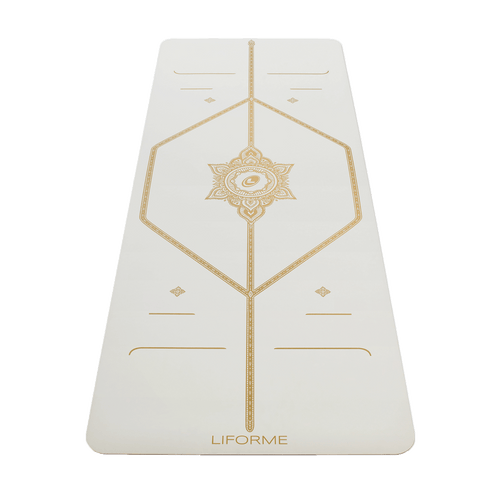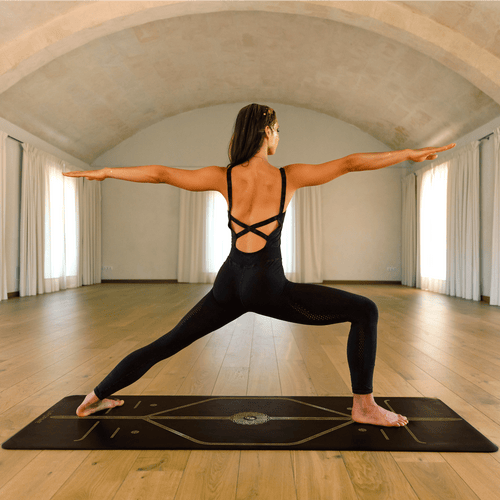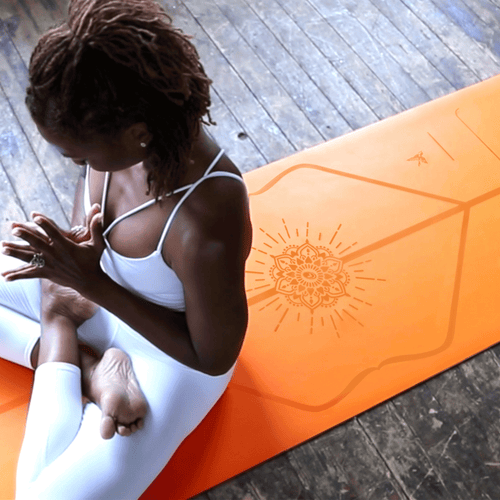When you first start doing yoga, the variety of different classes and styles on offer can be a bit overwhelming. While it’s perfectly ok to jump into any beginning level class, familiarising yourself with a few yoga terms and types will empower you to decode the schedule at your local studio or gym. If you find there are things you don’t like in your first few classes, don’t give up on yoga. There are so many types of yoga that the right fit for you is surely out there somewhere. Please see our Complete Guide to Getting Started With Yoga for much more valuable information for new beginners!
Vinyasa/Flow
Vinyasa and Flow are both used to indicate classes that include fluid movement from one yoga pose to the next in sync with an inhalation or exhalation of breath. (For example: Inhale and lift your arms over your head. Exhale and forward bend.)
Sometimes individual poses are held over the course of several breaths, but pretty soon it’s time to move on to the next posture, frequently going through the vinyasa sequence (Plank to Chaturanga to Upward Facing Dog) along the way. Flow classes, which often include Sun Salutations, can vary in pace but the continuous movement from pose to pose tends to make them vigorous.
Hatha
Hatha is a broad term that can encompass any of the physical practices of yoga, but when it’s used to describe a class, it often indicates a more static approach in which each posture is held for several breaths, often with rest in between. If the class is called Hatha Flow, expect a slower, gentler flow experience. The term Hatha has a very interesting history!
Hot
No surprise, this refers to yoga done in a heated room. How hot? The rooms are usually warmed to 35-42 degrees Celsius (95-108 degrees Fahrenheit). As you might imagine, this creates very sweaty (and sometimes slippery!) conditions. In addition to profuse perspiration, the hot room can allow for deeper stretching since muscles are being warmed externally. Hot yoga can be flow or static, depending on the method.

Power Yoga
Power Yoga is a flow style that emphasizes strength and athleticism. It is often fast-paced and intense and may incorporate callisthenics-inspired moves like push-ups and abdominal exercises. It’s intended to be a workout.
Restorative
This is a gentle style of yoga that promotes passive stretching and relaxation. It usually consists of long (up to 10 minutes) supine or reclined postures in which your body is supported by as many props (blankets, bolsters, blocks) as you need to get comfortable.

Yin
Though it has some things in common with Restorative (props, long hold times), the purpose of Yin is fundamentally different. Yin poses use gravity to attempt to stretch the connective tissue around the joints in order to increase range of motion and prepare the body for longer seated meditations.

It’s All Yoga
Although there are many styles of yoga, there is more that unites we yogis than separates us. Even if you always do Power Yoga, for instance, you can still walk into a Hatha class and expect to know the poses and speak the language. Many of the variables, including the speed, the music, the inclusion of meditation or chanting, are up to each individual teacher’s training and preference. Keep trying until you find the type of class you connect with. We’re all under the yoga umbrella and there’s plenty of room for everyone!





































